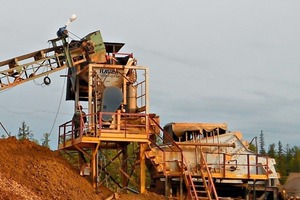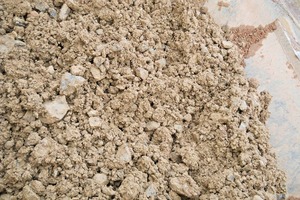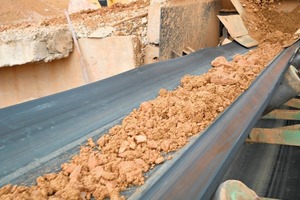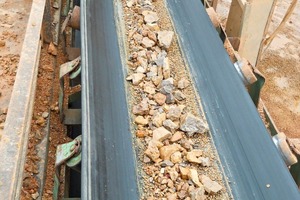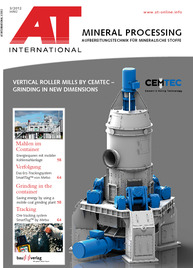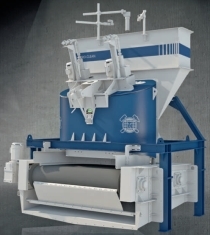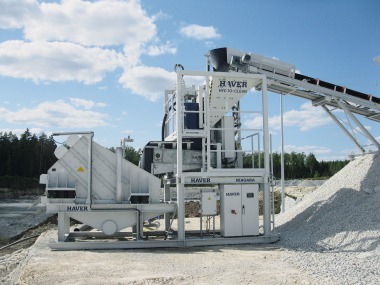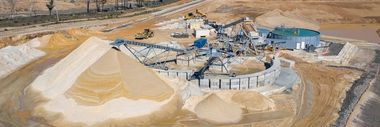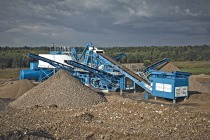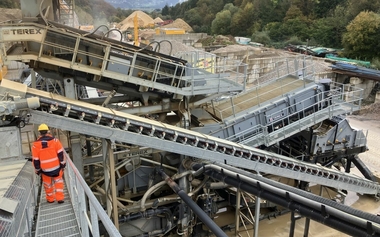More profit – reduced water and energy use
The Haver Screening Group’s (HSG) advanced Hydro-Clean® washing technology is helping a gold producer looking to expand its operation in eastern Russia increase production, reduce water consumption and minimize wear. The producer currently uses a test washing drum and two bearing screen to separate the sand and clay from its mined gold ore. This method provides inadequate washing results, causes excessive equipment wear and consumes high volumes of water and energy. Working closely with the customer, the HSG set up the Hydro-Clean 700 unit (Fig. 1) and rinse screen as a separate test operation to prove it could successfully wash the operation’s three distinct products better than the current test equipment. Each product has varying degrees of impurities, ranging from easy-to-wash to sticky material that is nearly impossible to clean with the current washing system. Since installing this combination, the operation has increased production from 5 t/h to 25 t/h, reduced its water consumption by up to 70 % and saved up to 30 % energy for every ton of material. In preparation for a large mine upgrade project, these positive results have led the operation to put the Hydro-Clean in its plans for all future mineral washing.
The Russian gold producer, who asked to remain unnamed due to the competitive advantage this equipment provides, first contacted the HSG about the Hydro-Clean in 2009 after seeing impressive results at a different gold operation using HSG equipment. The Hydro-Clean appealed to the producer because its current washing system, a traditional washing drum, was not removing enough sand and clay content to produce the required 2 mm to 120 mm gold product with clay content less than 2 %.
Ideal for use in clay-heavy material deposits (Figs. 2 and 3), the Hydro-Clean employs high-pressure nozzles, rotating at 90 rpm, to spray up to 90 % recycled water on the material with pressures up to 200 bars (2900 psi) to remove silt and clay particles as small as 63 µm from mineral mixtures. While the high-pressure nozzles mounted at the top rotate and spray the material with water, the turbulence in the drum creates additional scrubbing and abrasive forces that enhance the cleaning process to break up agglomerates and clean the particles of stubborn material. The Hydro-Clean also injects high-pressure streams of water into areas of the material (holes, cracks, etc.) that are difficult to reach with traditional cleaning methods. A UME 1200 x 4500 mm rinse screen follows and rinses away the loose sand and clay contaminants. The end result is a cleaner gold ore product with clay content less than 2 % (Fig. 4).
The Hydro-Clean consumes far less water and energy. The test washing drum and two bearing screen used by the Russian gold producer consumes up to 13 m3 (13 000 liters) of water to wash just one ton of material. With the Hydro-Clean and rinse screen, the producer only uses a maximum of 4 m3 (4000 liters) of water for each ton of material, reducing the operation’s water consumption by up to 70 %. In addition to water savings, the Hydro-Clean 700 model used by the gold producer was able to save up to 1.8 kW of energy for every ton of cleaned material when compared to the washing drum system.
The Hydro-Clean’s compact size and reduced weight keep overall operating and structural costs considerably lower than with traditional washing systems – which also require more equipment and a greater footprint. In addition, it experiences little wear with a low-maintenance design that allows for simple replacement of the few standard components that are subject to wear. This allows operations to save thousands of rubbles in yearly maintenance costs.
Thanks to the success of the Hydro-Clean 700 test unit, the producer plans to authorize an investment program that will allow the installation of a larger washing operation with several HSG Hydro-Clean 1000 units. This operation would be capable of washing up to 4 million t of auriferous ore a year. To make the adaption of this new, advanced washing technology easier, the HSG has provided easy-to-understand flow sheets on how the Hydro-Clean would fit into this new operation. If made part of the producer’s every day operation, the Hydro-Clean could reduce its total water usage by up to 70 % and energy costs by up to 30 %.

